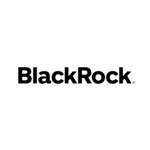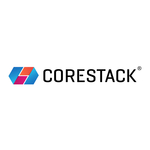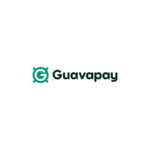KBRA Analytics Releases The Bank Treasury Newsletter, the Bank Treasury Chart Deck, and Bank Talk: The After-Show
NEW YORK–(BUSINESS WIRE)–KBRA Analytics releases this month’s edition of The Bank Treasury Newsletter, the Bank Treasury Chart Deck, and Bank Talk: The After-Show.
This month’s newsletter, Bank Treasurers Wish They Could Fly, reviews highlights from the Q2 2021 earnings results reported this month by the banking industry, focusing as usual on the treasury strategy it is pursuing in 2H 2021. One month into the second half of the year, bank treasurers find themselves contending with an interest rate environment that has only gotten tougher since the end of Q1 2021, with the 10-year Treasury having fallen by 50 basis points, to 1.25%. On top of that, loan demand remains weak despite monetary accommodation and stimulus. The basic message conveyed to the public was that the negative pressure on lending spreads is starting to bottom out, and that deposit inflows would slow down. However, while the Fed sanitized most of the excess reserves created during Q2 2021, the newsletter looks at recent Fed data since the end of Q2 2021 that shows both excess reserves and deposits are growing faster, which threatens to put more pressure on net interest margins as the gap between loans and deposits widens. Unable to wait much longer for higher rates, banks have added to their securities investments. Additionally, the largest banks are holding a record allocation in held-to-maturity in order to protect their capital from unrealized losses. The newsletter also looks at how bank treasurers are still focused on cutting deposit rates to offset pressures from narrower yields on earning assets.
Beyond the pressure on earnings, the banking industry faces intensifying competition from Fintech, shadow banks and other investors, forcing them to pour more money into technology and ultimately driving a tidal wave of bank mergers. The newsletter covers the executive order released by the Biden administration this month, which mandates regulators to tighten reviews and increase their scrutiny of proposed bank merger applications. The newsletter also reviews early reads by bank managers who think that the order potentially restricts larger bank mergers, meaning there should be no impact on consolidation activity among smaller institutions. Beyond the competition for business, the newsletter concludes by looking at how the banking industry is tackling competition for recruitment and the lengths—both financial and through flexible working arrangements—they are willing to go to recruit talent.
The Bank Treasury Chart Deck starts by tracking the market rally in bank stocks and the merger activity in the sector that seems to have peaked since the beginning of April 2021, and indeed, has become highly correlated with the yield on the 10-year Treasury, which slid 50 basis points since April 2021 through July 2021. From there, it looks at how the largest banks increased cash deployment in securities, while the rest of the banking industry has held back. The Chart Deck also examines how the Fed’s reverse repo facility helped to sanitize excess reserves and deposits through end-June 2021, but that the ratio of loans to deposits in the system is a record low 52%. Ending on a positive note, the last side in the deck reviews data from OpenTable, showing that restaurant reservations are back and growing strong.
This month’s edition of Bank Talk: The After-Show opens with Ethan showing Van a screen comparing a peer group of composite banks based on state average data by their net interest margin (NIM) and their net free funding spread (NFFS), the difference between a bank’s NIM and its net interest spread (NIS), to identify banks that would see above-average expansion of their NIMs the next time the Fed raises interest rates. The NFFS expands when the Fed raises rates, as banks earn more for investing their net free funding and narrows when the Fed is cutting rates. Contrary to what one might have expected, Ethan explains to Van that when the Fed was raising rates between December 2015 and December 2018, the NIS was narrowing, but the NFFS generally widened by more, leading to net wider NIMs for most banks.
Click below to view the reports:
- The Bank Treasury Newsletter Chart Deck: July 2021
- Bank Talk: The After-Show: July 2021
- The Bank Treasury Newsletter: July 2021
About KBRA Analytics
KBRA Analytics, LLC (KBRA Analytics) is our premier product platform for high quality data and advanced analytics. Our seasoned teams of industry specialists across each product provide unparalleled insight creating a foundation of deeper analysis and rapid discovery for users. KBRA Analytics is an affiliate of Kroll Bond Rating Agency, LLC (KBRA). KBRA is a full-service credit rating agency registered in the U.S., designated to provide structured finance ratings in Canada, and with credit rating affiliates registered in the EU and UK.
Contacts
Ethan M. Heisler, CFA
Strategy
+1 (516) 359-0975
[email protected]



































